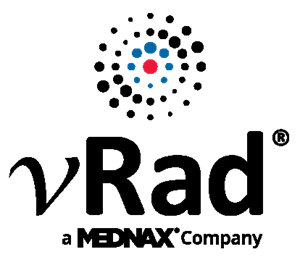Breast Cancer Awareness: What You Need to Know Now, Part 3
In this blog series Part 3, I will be sharing how newer screening tools now exist including breast MRI.

Remote radiologist jobs with flexible schedules, equitable pay, and the most advanced reading platform. Discover teleradiology at vRad.

Radiologist well-being matters. Explore how vRad takes action to prevent burnout with expert-led, confidential support through our partnership with VITAL WorkLife. Helping radiologists thrive.

Visit the vRad Blog for radiologist experiences at vRad, career resources, and more.

vRad provides radiology residents and fellows free radiology education resources for ABR boards, noon lectures, and CME.

Teleradiology services leader since 2001. See how vRad AI is helping deliver faster, higher-quality care for 50,000+ critical patients each year.

Subspecialist care for the women in your community. 48-hour screenings. 1-hour diagnostics. Comprehensive compliance and inspection support.

vRad’s stroke protocol auto-assigns stroke cases to the top of all available radiologists’ worklists, with requirements to be read next.

vRad’s unique teleradiology workflow for trauma studies delivers consistently fast turnaround times—even during periods of high volume.

vRad’s Operations Center is the central hub that ensures imaging studies and communications are handled efficiently and swiftly.

vRad is delivering faster radiology turnaround times for 40,000+ critical patients annually, using four unique strategies, including AI.
.jpg?width=1024&height=576&name=vRad-High-Quality-Patient-Care-1024x576%20(1).jpg)
vRad is developing and using AI to improve radiology quality assurance and reduce medical malpractice risk.

Now you can power your practice with the same fully integrated technology and support ecosystem we use. The vRad Platform.

Since developing and launching our first model in 2015, vRad has been at the forefront of AI in radiology.

Since 2010, vRad Radiology Education has provided high-quality radiology CME. Open to all radiologists, these 15-minute online modules are a convenient way to stay up to date on practical radiology topics.

Join vRad’s annual spring CME conference featuring top speakers and practical radiology topics.

vRad provides radiology residents and fellows free radiology education resources for ABR boards, noon lectures, and CME.

Academically oriented radiologists love practicing at vRad too. Check out the research published by vRad radiologists and team members.

Learn how vRad revolutionized radiology and has been at the forefront of innovation since 2001.

%20(2).jpg?width=1008&height=755&name=Copy%20of%20Mega%20Nav%20Images%202025%20(1008%20x%20755%20px)%20(2).jpg)

Visit the vRad blog for radiologist experiences at vRad, career resources, and more.


Explore our practice’s reading platform, breast imaging program, AI, and more. Plus, hear from vRad radiologists about what it’s like to practice at vRad.

Ready to be part of something meaningful? Explore team member careers at vRad.
1 min read
 vRad Marketing
:
February 28, 2012
vRad Marketing
:
February 28, 2012

Conventional 2D mammography images the whole breast in one exposure. Two images of each breast at orthogonal angles to one another are then acquired in order to aid the physician in creating a mental 3D picture of the breast. This is to ensure that the doctor is able to extrapolate information from 2D pictures and then subsequently find them in 3D space, in this case, the breast. The Achilles heel of conventional 2D mammography is the ability to find cancer in women with mammographically dense breasts. While it is fairly straightforward to visually detect cancer in a fatty breast, only about 50 percent of cancers will be visible in extremely dense breasts.
Digital Tomosynthesis
There are several new technologies today to help the radiologist overcome this fundamental weakness in imaging. One of the most promising techniques is called digital tomosynthesis. Digital tomosynthesis produces a 3D view of breast tissue. The x-ray tube is moved through a limited arc angle while the breast is compressed and a series of images are acquired. The series, usually about 16 images, are then reconstructed to form a three-dimensional image set.
3D Imaging Benefits
The potential benefits include greater conspicuity of abnormalities by elimination of overlapping fibroglandular structures, fewer callbacks for additional imaging thereby reducing patient anxiety, better visualization leading to improved categorization of size, shape and location of tumor, fewer false positive findings requiring biopsy, and finally, better visualization of potential multifocal sites of tumor.
Tomosynthesis Radiation
The radiation dose for digital tomosynthesis is under the FDA regulated limit for mammography. Adding tomosynthesis does involve a minimal amount of additional radiation compared with a standard mammogram.
Future Use of Tomosynthesis
While preliminary clinical studies have shown efficacy, more rigorous studies are currently underway to establish the potential applications of tomosynthesis.
What are the future applications of tomosynthesis?
Back to Blog
In this blog series Part 3, I will be sharing how newer screening tools now exist including breast MRI.
.png)
Whoever said the only things certain in life are death and taxes never faced an MQSA inspection. Federally mandated in the early ’90s...
.png)
Originally published by Michael Walter on Radiology Business In 2020, a growing health system in the Northeast asked vRad for assistance. Like many...
vRad (Virtual Radiologic) is a national radiology practice combining clinical excellence with cutting-edge technology development. Each year, we bring exceptional radiology care to millions of patients and empower healthcare providers with technology-driven solutions.
Non-Clinical Inquiries (Total Free):
800.737.0610
Outside U.S.:
011.1.952.595.1111
3600 Minnesota Drive, Suite 800
Edina, MN 55435